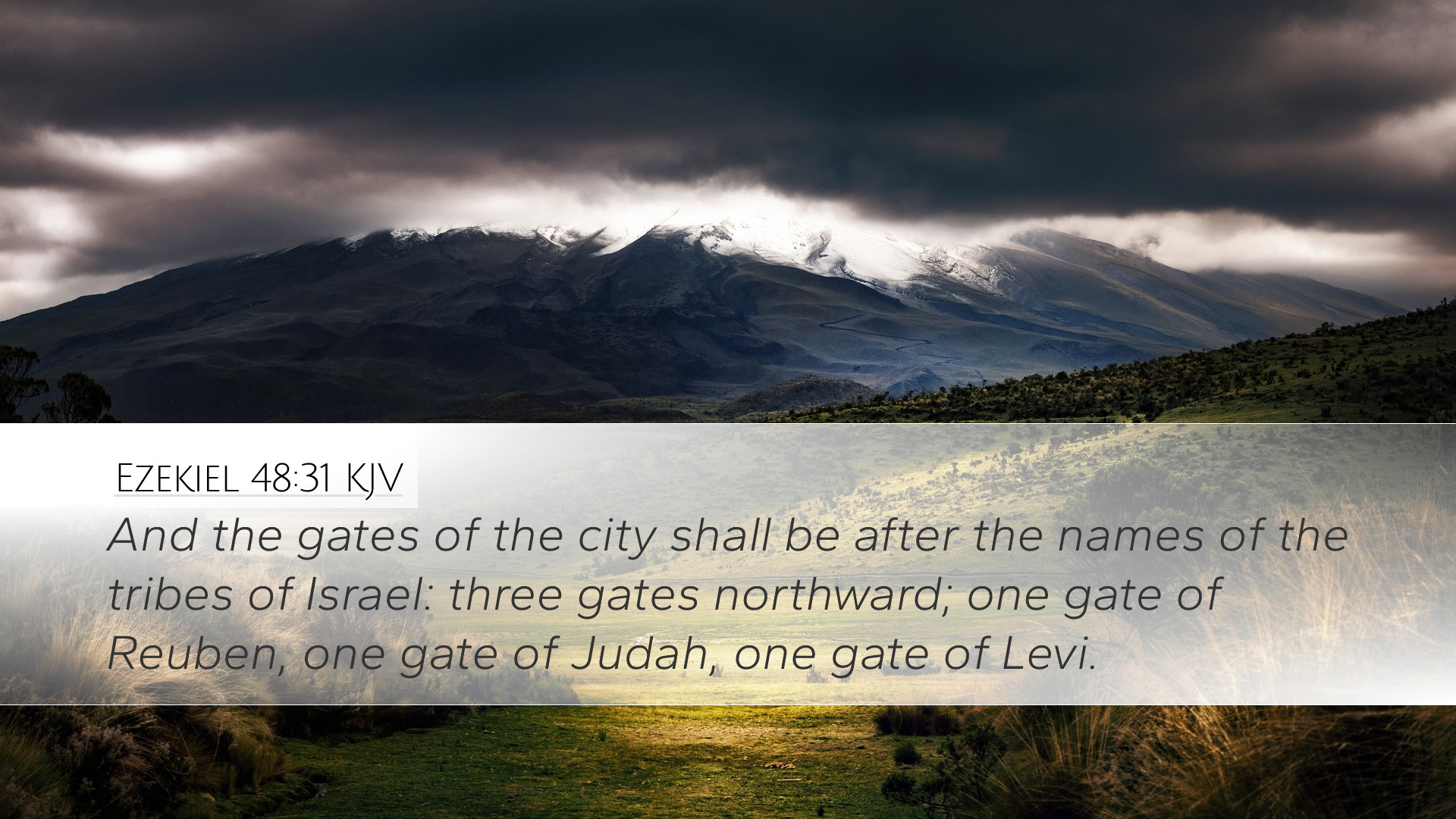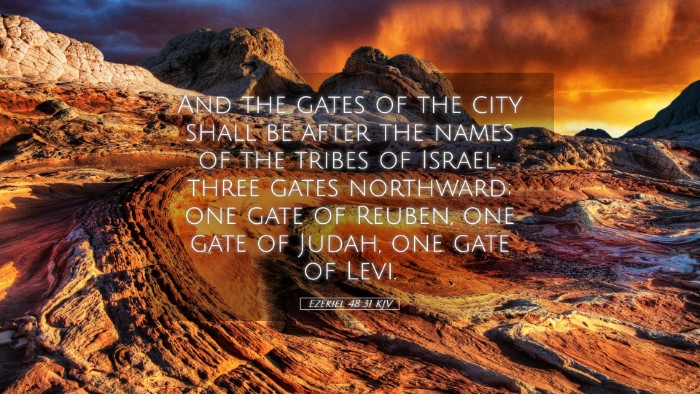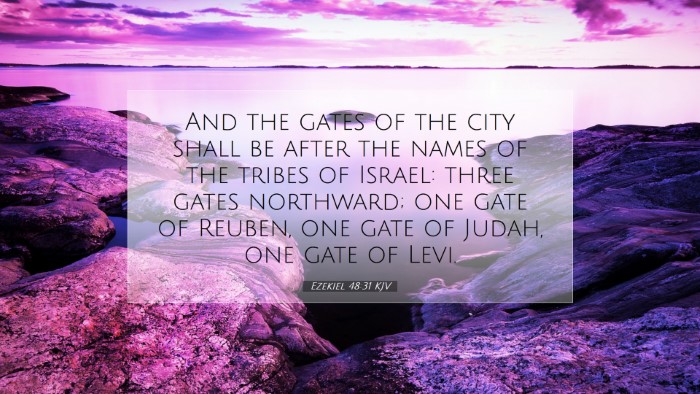Bible Commentary on Ezekiel 48:31
Ezekiel 48:31 states: “And the gates of the city shall be after the names of the tribes of Israel: three gates northward; one gate for Reuben, one gate for Judah, and one gate for Levi.” This verse concludes the prophetic vision of the cultural and geographical layout of the New Jerusalem, emphasizing the restoration of Israel and its tribal identity.
Overview of Ezekiel's Prophetic Vision
The book of Ezekiel has been a profound source of theology and prophecy within the Judeo-Christian tradition. This final chapter focuses on the idealized structure of the restored Jerusalem and signifies hope and renewal for the exiled Israelites.
Historical Context
The Israelites found themselves in Babylonian captivity, grappling with questions of identity and future restoration. Ezekiel, a priest and prophet, delivers messages of judgment and restoration, providing a vision of a future where God dwells among His people again. This vision includes the division of the land according to tribes, hence highlighting the importance of tribal identity and heritage.
The Significance of the Gates
In Ezekiel 48:31, each gate of the city is named after one of the tribes of Israel. This emphasis reflects various theological and sociocultural significances:
- Identity and Heritage: The naming of the gates underscores the restoration of Israel's identity. Under Babylonian rule, the Israelites felt disconnected from their covenantal history. The gates symbolize a return to the tribal roots and collective identity.
- Accessibility: The arrangement of the gates indicates the openness of the New Jerusalem. With three gates on each side, it suggests a welcoming nature and accessibility for all, reinforcing that God’s promise is available to everyone.
- Security: Gates function as points of security and protection. The presence of these gates assures the inhabitants of the city's divine protection against external threats.
Commentary Insights
Matthew Henry's Analysis
According to Matthew Henry, Ezekiel 48:31 serves as a crucial reminder of God’s covenant with Israel. He emphasized the significance of the gates named after the tribes, relating them to the protection and governance that God provides to His people. Henry notes that this is not merely about physical gates but represents the spiritual gates through which God's grace flows.
Albert Barnes' Observations
Albert Barnes offers a detailed exposition regarding the tribal allocations, highlighting that the gates signify the unity of the tribes despite their past transgressions. He notes that the listing of Reuben, Judah, and Levi reflects the historical prominence of these tribes in Israel's narrative. Barnes further emphasizes that this arrangement demonstrates God’s faithfulness to His covenant, as He restores not just the land but also the integrity of the tribal structure.
Adam Clarke's Interpretation
Adam Clarke provides a deeper theological lens, focusing on the spiritual implications of the gates. He suggests that while the gates have historical significance, they possess deeper meanings related to the ecclesiastical structure of the Church. Clarke argues that these gates are coverings for the entrance to heavenly truths and blessings, suggesting a parallel between the ancient city and the New Jerusalem described in Revelation.
Theological Implications
The depiction of the gates invites contemporary theological reflection:
- God's Faithfulness: The gates serve as constant reminders of God's faithfulness to His promises throughout the generations. The faithful God continues to fulfill His covenant even in the face of disobedience.
- Inclusion and Community: The structure echoes the biblical theme of community. The gates signify that each tribe has a place and a purpose, reinforcing the notion that all believers are contributors to the body of Christ.
- Hope for Restoration: In a world often marred by division and conflict, the gates illustrate the hope for restoration. For pastors and church leaders, it serves as a motivating call to foster unity within the body of Christ.
Applications for Ministry and Scholarship
Studying Ezekiel 48:31 provides a rich tapestry for theological application. Pastors and seminaries can focus on the following:
- Teaching on God’s Covenantal Nature: The narrative can be used to delve into topics about God’s unchanging nature and His promises to His people.
- Ecclesiology: Discuss how church structure and community can reflect the biblical understanding of inclusion and identity within the body of Christ.
- Prophetic Literature Study: Encourage students of theology to explore the broader context of prophetic literature, emphasizing themes of restoration and hope amidst exile and despair.
Conclusion
Ezekiel 48:31 encapsulates the hope and assurance given to the Israelites regarding their identity and restoration. Through various commentaries, we glean insights not only on the immediate historical context but also on the larger theological implications that resonate with believers today. The gates symbolize God's faithfulness, the importance of community, and the promise of restoration, serving as both a challenge and an encouragement for ministers, students, and scholars as they navigate the complexities of faith and identity in a contemporary context.


